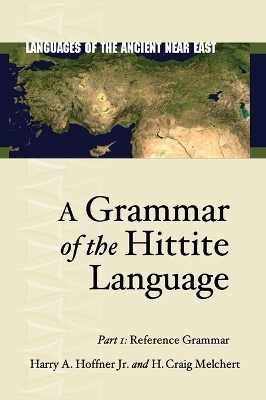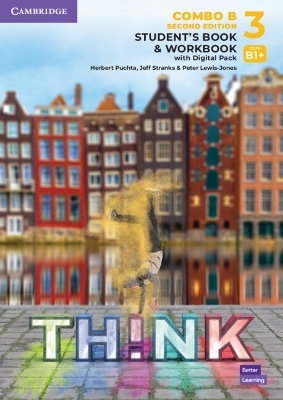
A Grammar of the Hittite Language
Eisenbrauns
978-1-57506-119-1 (ISBN)
Hoffner and Melchert’s long-awaited work is sure to become both the standard reference grammar and the main teaching tool for the Hittite language. The first volume includes a thorough description of Hittite grammar, grounded in an abundance of textual examples. Moreover, the authors take into account a vast array of studies on all aspects of the Hittite language. In the five decades since the publication of the second edition of Johannes Friedrich’s Hethitisches Elementarbuch (1960), our knowledge of Hittite grammar has become more detailed and nuanced, especially because of the number of new texts available and the growing body of secondary literature. This first volume in the LANE series fills a serious gap and offers a comprehensive reference for decades to come.
The second volume is a tutorial that consists of a series of graded lessons with illustrative sentences for the student to translate. The tutorial is keyed to the reference grammar and provides extensive notes.
The printed grammar volume is accompanied by a CD-ROM that contains the entire text of the grammar and tutorial in searchable, cross-referenced, and hyperlinked form.
Preface
Abbreviations and Conventional Markings
General Abbreviations
Bibliographical Abbreviations
Introduction
The Hittites and Their Language
Decipherment
The Text Corpus
Modern Resources for Study
Cuneiform Editions
Commentaries
Sign Lexicon
Grammars
Dictionaries
Text Catalogues and Name Collections
Chapter 1. Orthography and Phonology
The Cuneiform Writing System of the Hittites
Orthography
Writing Conventions
Transcriptional Conventions
Homophony
Polyphony
Multivalence
New Values
Logogram Pronunciation
Phonology
Individual Phonemes (Vowels and Consonants)
Vowels
Consonants
Phonotactics
Onomatopoeia
Accent
Chapter 2
Noun and Adjective Formation
Underived Stems
Derived Stems
Reduplicated Nouns and Adjectives
Compounded Nouns and Adjectives
Chapter 3
Noun and Adjective Inflection
Inflectional Endings
The Basic Scheme
Common-Gender Nominative
Common-Gender Accusative
Neuter Nominative-Accusative
Ergative
Genitive
Dative-Locative
Vocative
Allative
Ablative
Instrumental
Stem Variation
Chapter 4
Noun and Adjective Declension
a-Stem Nouns
Common-Gender a-Stem Nouns
Neuter a-Stem Nouns
a-Stem Adjectives
i- and u-Stem Nouns
i-Stem Nouns
i-Mutation
Common-Gender i-Stem Nouns
Neuter i-Stem Nouns
ai-Stem Nouns
i-Stem Adjectives
u-Stem Nouns
Common-Gender u-Stem Nouns
Neuter u-Stem Nouns
au-Stem Nouns
u-Stem Adjectives
e-Stem Noun
Consonantal-Stem Nouns and Adjectives
-Stem Noun
l-Stem Nouns
al-Stem Nouns
e/il-Stem Nouns
ul-Stem Nouns
n-Stem Nouns
Neuter n-Stem Nouns
Common-Gender n-Stem Nouns
r-Stem Nouns and Adjectives
s-Stem Nouns
t-Stem Nouns and Adjectives
Simple t-Stem Nouns
nt-Stem Nouns and Adjectives
r/n-Stem Nouns
Non-Derived r/n-Stem Nouns
Derived Nouns with Suffix -atar
Derived Nouns with Suffix -eššar
Derived Nouns with Suffix -awar
Derived Nouns with Suffix -mar
Verbal Substantives
Irregular Consonant-Stem Nouns
Chapter 5
Personal Pronouns
Distinctive Features of Pronominal Stems and Endings
Accented (Independent) Personal Pronouns
Enclitic Personal Pronouns
Chapter 6
Possessive Pronouns
Chapter 7
Deixis: The Demonstratives
ka- and apa-
aši, uni, ini
anni-
Adverbs Built to Demonstratives
Chapter 8. Relative and Indefinite Pronouns
The Interrogative and Relative Pronoun kui-
The Indefinite Pronoun kuiški and the Distributive kuišša
Other Stems with Partial Pronominal Inflection
Chapter 9
Numbers
Form and Declension of the Cardinals
‘One’
‘Two’ to ‘Ten’
The Syntax of the Cardinals
Agreement in Case
Number Agreement with Non-Collectives
Counting Non-Decimal Sets
Word Order in Counting
Fractions
Ordinal Numbers
Ordinals in -t-
Multiplicatives
Distributives
Derivative Adjectives and Verbs
Numbers in Compounds
Compound Numbers
Chapter 10. Verb Formation
Reduplicated Roots
Verbal Suffixes and Infixes
Overview
The Individual Suffixes
Chapter 11
Verb Inflection
Types of Verbal Inflection
Irregularities in the mi-Conjugation
Irregularities in the ḫi-Conjugation
Medio-Passive Endings
Verbal Substantive, Participle, Infinitive, and Supine
Chapter 12
Conjugation of mi-Verbs
Consonantal Stems
Root Stems
Affixed Stems
Vocalic Stems
Ablauting
Non-Ablauting
Suppletive Verb
Verbs with Mixed Stems
Chapter 13
Conjugation of ḫi-Verbs
Consonantal Stems
Vocalic Stems
a-Stems
Stems Originally in -Cw-
ai-Stems
Stems with Mixed Inflection in -a- and -i-
Verbs with the Imperfective Suffix -anna/i-
Mixture of mi- and ḫi-Forms
Chapter14
Medio-Passive Conjugation
Consonantal Stems
Vocalic Stems
Chronology of the Medio-Passive Endings
Medio-Passive Stem Formation
Chapter 15
Grammatical Agreement
Types of Agreement
Lack of Agreement
In Gender
In Number
Chapter 16
Noun Cases
Generalities
Nominative
Vocative and ‘Naming Construction’
Other Forms of Direct Address
Accusative
Ergative
Genitive
Word Order in a Genitival Phrase
Dative-Locative
Indirect Object
Indicating Possession
Dative of Disadvantage
Goal
Purpose or Result
Location
Temporal Uses
Units of Measure and Dimensions
Additive-Incremental
Allative
Ablative
Instrumental
Cases with Particular Verbs
Chapter 17
Adjectives
Comparison of Adjectives
Comparative Degree
Superlative Degree
Chapter 18
Pronouns
Independent Personal Pronouns
Enclitic Personal Pronouns
(Third-Person) Subject Clitics
Intransitive Verbs with Subject Clitics
Intransitive Verbs without Subject Clitics
Other Clauses without Referential Subjects
Special Cases
Demonstrative Pronouns
ka-, apa-, and aši: Word Order
Declinable kaš kaš as a Distributive Expression
Correlated ka-Forms Having Different Cases
Other Deictic Elements
The Indefinite Pronoun kuiški
tamai-
Chapter 19
Adverbs
Local Adverbs
Temporal Adverbs
Adverbs of Manner
Denominative Adverbs
The Adverbial Suffix -ili
Adverbial Circumlocutions
Chapter 20
Local Adverbs, Preverbs, and Postpositions
Free-standing Adverbs
Preverbs
Postpositions
Chapter 21
Verb Voice
Active Voice
Middle Voice
Passive Voice
Chapter 22
Verb Tense
Present
Preterite
The Analytic Perfect Construction
Function
Form
Uniqueness within the Old Anatolian Indo-European Group
Examples
‘Stative’ Constructions with ḫar (k)- and eš-
Chapter 23
Verb Mood
Indicative
Imperative
Optative, Potential, and Irrealis
Optative
Potential and Irrealis
Chapter 24
Verb Aspect
Imperfectives
Adverbial Markers
Suffix Markers
Nuances of Imperfective Aspect
Choice of Suffix
Suffix Redundancy
kaša (tta) and kašma
The ‘Serial’ Use of pai- ‘to go’ and uwa- ‘to come’
Chapter 25
Non-Finite Verb Forms
Verbal Substantive
Infinitive
Supine
Participle
Chapter 26. Negation
natta
Word Order with natta
Negative Rhetorical Questions (with Negatives of Assertion)
nawi ‘not yet’
Imperatival and Categorical Negative le
le⸗man and numan
Categorical Negative le
Word Order with le
ne/ikku
Double Negatives
Carry-Over of Negative Force
Summary
Chapter 27
Questions
Intonation Marking
Yes-No Questions
Direct Questions with Interrogative Pronouns, Adjectives,
and Adverbs
Questions Posing Alternatives
Indirect Questions
Chapter 28
Particles
The Particle -wa (r-)
The Particle -z (a)
Form
Reflexive Function
Lexical Use of -z (a)
Use in Nominal Sentences and with the Verb ‘To Be’
The Local Particles -an, -apa, -ašta, -kan, and -šan
The Particle -kan
The ‘Local’ Value
Accompanying the ‘Dative of Disadvantage’
The Terminative Value
With Verbs of Hostility
Aspect Independent of Verb’s Lexical Meaning
Absence of Expected -kan
Summary
The Particle -šan
Co-occurring with the Adverb šer
Physical or Conceptual Movement toward an Object
The Particle -an
The Particle -apa
The Particle -ašta
The Particle -pat
Anaphoric
Particularizing
Restrictive
Contrastive
Chapter 29
Conjunctions
Clause-Initial Clause-Linking Conjunctions
Distribution
nu
šu
ta
Enclitic Clause-Linking Conjunctions
-a/-ma
-a/-ya
Asyndeton
Form
Function
Disjunction
naššu naš (šu)ma
-(a) ku -(a) ku
Chapter 30
Clauses
Word Order
Major Constituents
Deletion Processes
Sentential Clitics
Nominal and ‘To Be’ Sentences
Dependent Clauses
Temporal Clauses
Causal Clauses
Concessive Clauses
Conditional Clauses
Simple Conditions
Contrary-to-Fact Conditions
Relative Clauses
Indirect Statements and Questions
Multiple Dependent Clauses
Chapter 31. Sumerian and Akkadian
Sumerograms
Nouns, Adjectives, and Participles
Pronouns
Verbs
Akkadian Grammar
Orthography
Superscripting
Phonetic Complements
Phonology
Morphology
Nouns and Adjectives
Pronominal Suffixes
Numbers
Verbs
Conjunctions
Calques
Prepositions
References
| Erscheint lt. Verlag | 30.6.2008 |
|---|---|
| Reihe/Serie | Languages of the Ancient Near East |
| Sprache | englisch |
| Maße | 178 x 254 mm |
| Gewicht | 975 g |
| Themenwelt | Schulbuch / Wörterbuch ► Wörterbuch / Fremdsprachen |
| Geisteswissenschaften ► Sprach- / Literaturwissenschaft ► Sprachwissenschaft | |
| ISBN-10 | 1-57506-119-8 / 1575061198 |
| ISBN-13 | 978-1-57506-119-1 / 9781575061191 |
| Zustand | Neuware |
| Informationen gemäß Produktsicherheitsverordnung (GPSR) | |
| Haben Sie eine Frage zum Produkt? |
aus dem Bereich



